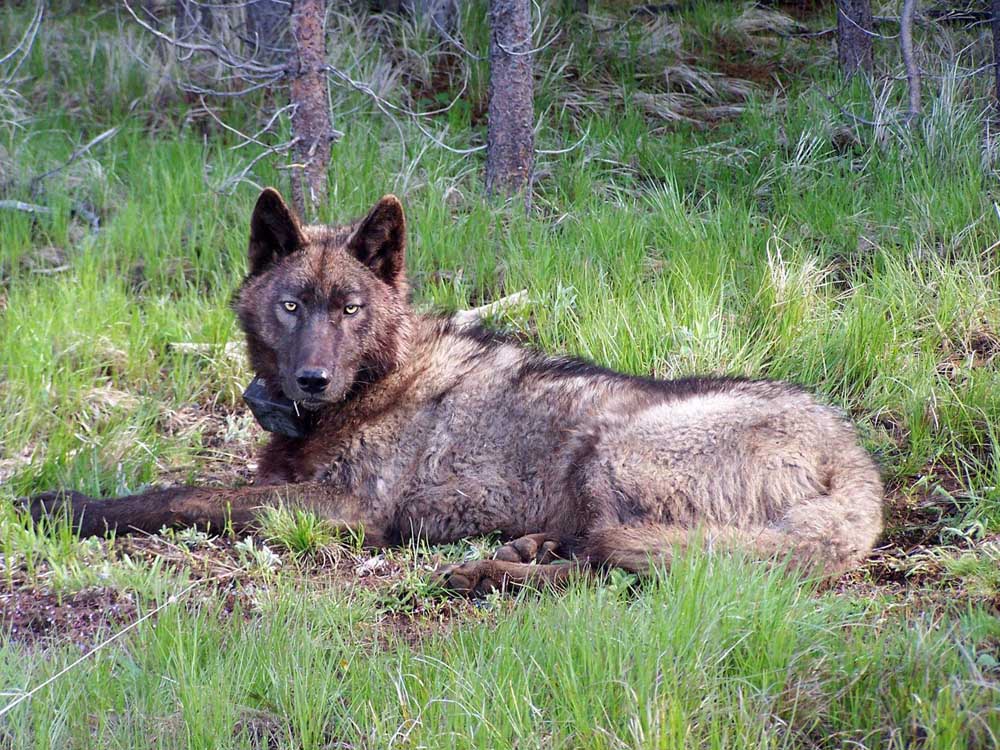State, tribes and ranchers protect livestock
Published 10:24 am Wednesday, May 27, 2020

- A male gray wolf.
PENDLETON — As cows and their young calves are turned out onto spring pastures in the Blue Mountains, ranchers are struggling to protect their herds from predators.
It’s been 11 years since a pair of wolves killed lambs and a calf in the Keating Valley of Baker County. Today, most of Oregon’s wolves still live in the state’s northeast counties — Umatilla, Union, Baker and Wallowa.
“In any square inch of land northeast of Interstate 84, one can assume there is a wolf near cows,” said Greg Rimbach, district biologist for the Oregon Department of Fish and Wildlife Pendleton field office.
By increasing human presence, ranchers and Confederated Tribes of the Umatilla Indian Reservation allotment managers aim to quell livestock loss following several investigations of dead cattle found since the end of April.
“The tribe has been up there almost every day helping haze wolves and checking cows,” Rimbach said. “One producer was so concerned, he is now up there every day.”
According to Rimbach, a rancher has seen up to three wolves running together in the grazing pastures near Cabbage Hill. One producer is even camping out overnight with the cattle to deter losses.
Carl Scheeler, a wildlife program manager for the tribes, said the tribes support the use of nonlethal measures first and foremost. Wolves have made the reservation their home for nearly a decade.
“We’ve had wolves for quite a while and we knew the reservation would be the center of wolf activity, and they seem to keep up against the interstate,” Scheeler said.
In February, OR-85, a nearly 1-year-old wolf, was collared on the Umatilla reservation. According to Rimbach, over the past few weeks he’s been tracked between the Interstate 84 weigh scales on Cabbage Hill and Meacham, a 10- to 12-mile distance cross-country.
The first investigation this spring of a dead calf on the reservation was in the Telephone Ridge area on April 30. That morning, a rancher found a dead calf on his allotment, while checking his cattle. The following day, he found another dead calf in close proximity to the first calf. Both calves were 2½ months old and weighed approximately 150 pounds.
There was evidence the calves were bitten before they died, evidence of wolf tracks and scat observed less than 100 yards from the carcass locations, along with radio-collar data that showed a wolf in proximity to the carcass locations on April 29 and April 30. The calves’ deaths were determined “probable” wolf-caused incidents by state Department of Fish and Wildlife biologists.
Less than two weeks later, biologists were back on Telephone Ridge to investigate a 10-year-old, 1,300-pound dead cow. The carcass had been heavily scavenged with all internal organs consumed and little muscle tissue remaining. Rimbach said the scene had lots of bear scat, indicating at least one of the scavengers was a bear. Because there was no evidence of a predator attack on the carcass or at the scene, the cause of death was determined to be “unknown.”
The following day, May 12, a range rider found a dead, 3-month-old calf on Telephone Ridge. The carcass had been heavily scavenged with all entrails and most muscle tissue consumed. Due to the lack of hide and muscle tissue remaining, state Department of Fish and Wildlife biologists determined the death a “possible/unknown.”
When biologists responded to yet another report of a dead calf on Telephone Ridge they found enough evidence to determine the death of a 3-month-old calf was wolf-caused. The livestock producer reported seeing one wolf near his cows on May 11 near the location the calf was later found. The location, size of bite scrapes, and severity of the injuries are similar to those observed in other calves attacked by wolves. The department attributed the death to wolves from the Mount Emily Pack.
No reports have been filed in nearly a week and managers are expecting that increased human presence will keep the wolves at bay. Producers and tribal staff have hazed wolves away from cattle repeatedly.
“One producer has hazed wolves away from his herd five or six times,” Rimbach said.
Spring is a good time to get collars on wolves, and Rimbach said a wolf in the North Emily Pack near Highway 204 was collared a few weeks ago. Tracking information indicates OR-47 is in the Ruckel Ridge area, but livestock won’t be turned out in that area until June 1.
Rimbach said cooperation with tribal staff and the ranchers has been “spectacular” and anticipates the conflict between wolves and livestock on Telephone Ridge will subside. Communicating collar information is part of the defense strategy.
“My assistant and I provide collar information every single day with livestock producers,” Rimbach said.
They also notify Scheeler or his staff when a collared wolf is located on a tribal allotment, mobilizing wildlife and range staff to respond quickly to the site.
“It’s important to have presence out there to locate the depredation in a timely fashion,” Scheeler said.
Monitoring wolf activity is also part of the tribe’s daily routine while cattle are on the allotments.
“We have our regular staff doing patrols and talking to operators on a daily basis,” Scheeler said.
The tribe has also hired an additional range rider to supplement the riders hired by local ranchers, Scheeler said, and to dissuade scavenging. He said the remnants of the dead livestock are removed from the pasture after an investigation is completed.
Anticipating that the reservation would be the center of wolf activity as they naturally recolonized in Oregon from wolves dispensing from Idaho and Washington state, the tribe developed its own wolf management plan. While Scheeler said the tribe supports the use of nonlethal measures, its plan reflects the state’s plan which allows a producer on a tribal allotment to shoot a wolf caught in the act of biting, chasing or harassing livestock.





